Mount Olympus: What Not to Miss This Summer
Discover the best of Mount Olympus...
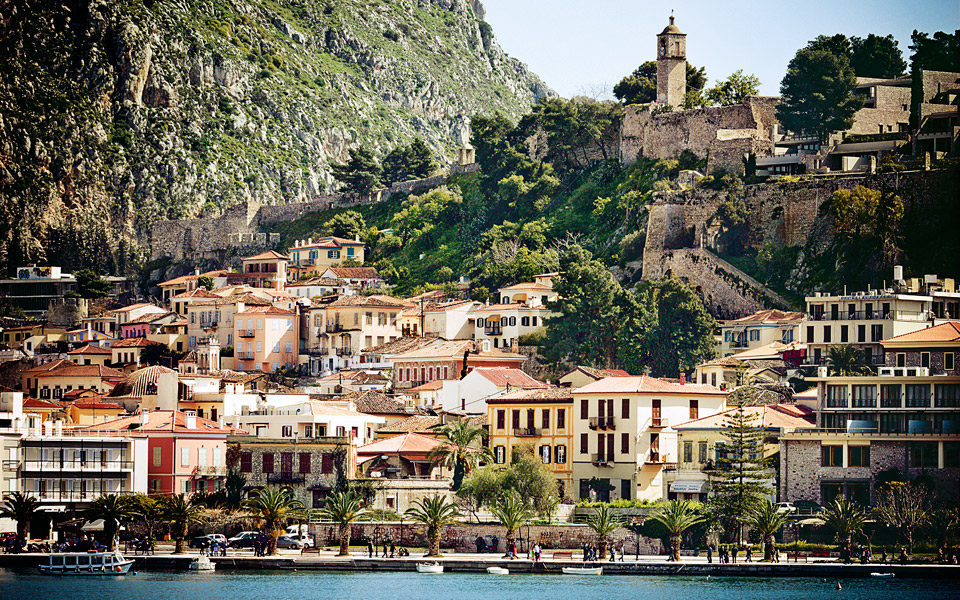
Old Town of Nafplio
© Yannis Larios
I bought a house in Nafplio 20 years ago. I wanted to take early retirement from my university job and eventually to live full-time in Greece. My love affair with Greece had started some years earlier. I had looked around the country and decided that the islands would be too quiet in the winter, too remote. To own an orange grove or vineyard had a certain attraction and various parts of the Greek mainland had their own particular appeal. But the Peloponnese seemed to have everything. And its historic capital, Nafplio, thrust itself upon me. Built on the slope of a small peninsula jutting into the Argolic Gulf and under the imposing fortifications of Acronafplia, it immediately transmitted its great character, charm and historic interest. And yet at the same time it was a small, compact place, obligingly spilling, by geographic necessity, the bulk of its 14,000-strong population into the adjacent New Town of Nafplio, which was built largely in the 20th century.
The house was a ruin, but it sat, and sits, at the top of the town looking out over the gulf, the shoreline and the mountain ranges in the distance. The view is simply magnificent, and the constant changes of color and light through the day and through the seasons enhance the effect. The house itself is architecturally typical of the Old Town – sturdily built in local stone, with a pitched roof of red barrel tiles, shuttered windows, balconies and paved pathways. The narrow streets of houses irregularly march across the side of the hill, closing together at the top as they adapt to the natural contours, more widely spread and neatly organized down below on more level ground, and this marks the development of the town itself from a first sheltering under the castle walls to an effusion of civic pride along the seafront.
All this came about in stages between the 15th and 18th centuries, followed by further development on reclaimed land outside the seawall in the 19th century. Apart from this last stage, when a home-grown neoclassicism became the order of the day, the town is largely “Venetian” in style, though fine Ottoman buildings also survive from the four-and-a-half cen- turies of Turkish occupation.
“ Built on the slope of a small peninsula jutting into the Argolic Gulf and under the imposing fortifications of Acronafplia, Nafplio transmits its character. ”
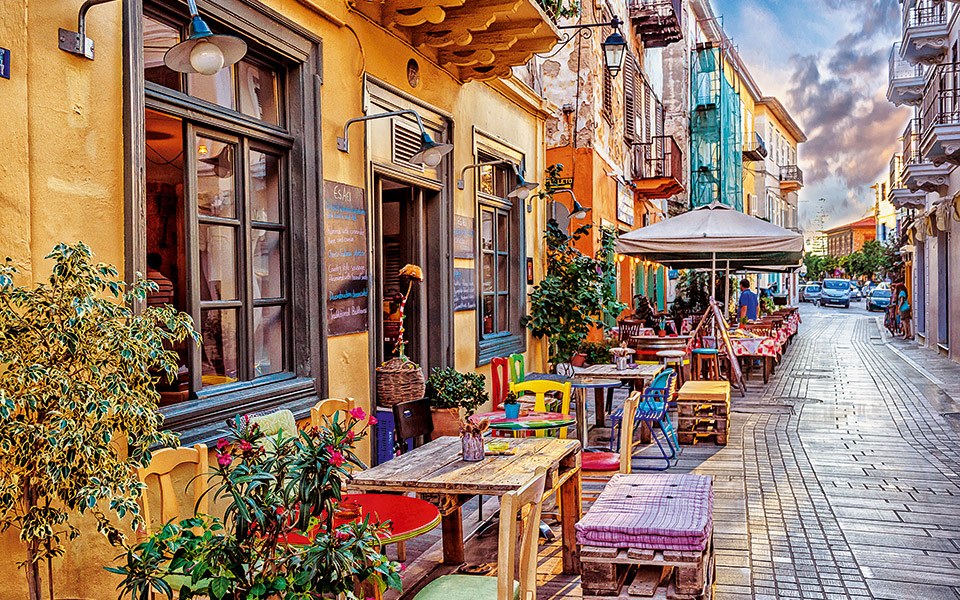
Buildings constructed at a time when Nafplio was under the rule of the Ottoman Turks or the Venetians, or in the first years after liberation.
© Sofia Kotsilieri
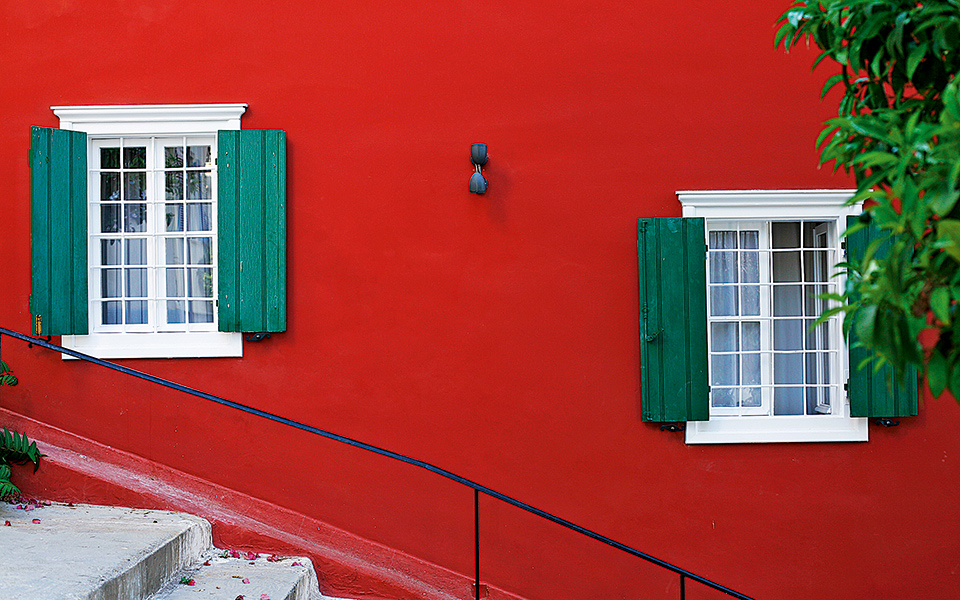
Characteristic colors of the Old Town of Nafplio
© Nikos Kokkas
The house was made habitable in three years thanks to the good offices of a local builder. As quickly as we could, my wife and I moved in and became citizens of Nafplio, which quickly turned out to be perfect for us. There is of course a fine range of excellent hotels and tavernas, and the town is well attuned to the needs of visitors. But it offers so much more, for local residents too. In addition to several excellent museums, there are concert halls, theaters and all the rich cultural life that goes with them. There are libraries, a university faculty and a well-endowed, local archive for scholars and writers.
All kinds of open-air activities beckon, and there is a well-appointed and attractive beach, Arvanitia, right below the Palamidi fortress, just five minutes from my house. Beginning at this beach, a romantic stone path skirts the fortified promontory of Acronafplia and ends at the harbor. And wherever you go, Nafplio’s two greatest assets are omnipresent. Firstly, the gorgeous topography and landscape of the town in its special setting, with the great crag of Palamidi to the east and the seascape to the north. Secondly, the eloquent presence of its vivid and turbulent past: for the town truly wears its history on its sleeve.
“ Nafplio is a town for all seasons. Unlike the islands, it does not batten down the hatches in winter and send its workers away. Many here serve a tourist industry that never closes. ”
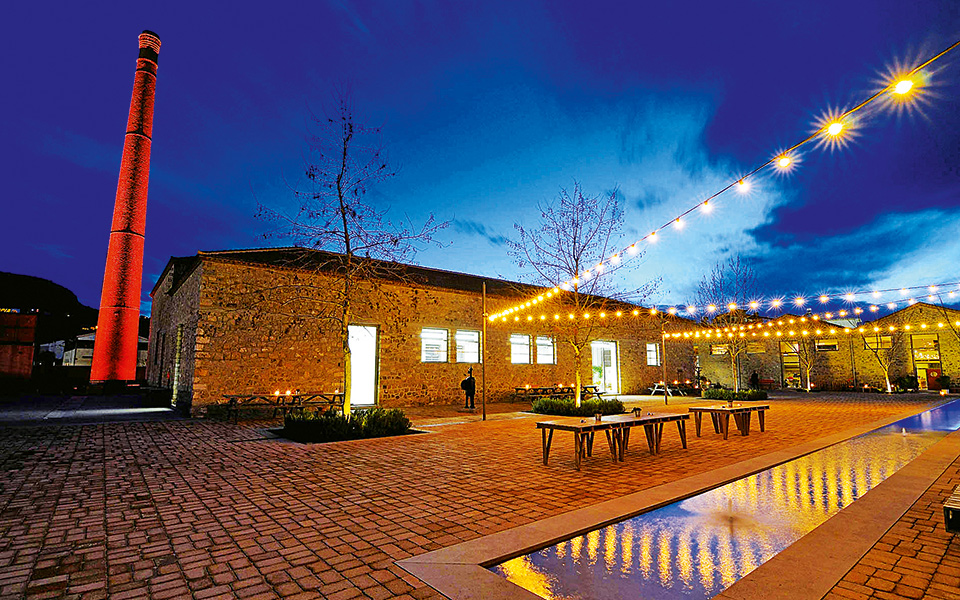
The Fougaro (3rd km. Nafplio-Epidaurus road). Once a canning factory, the completely renovated building now houses a library, art workshop, exhibition and concert areas, as well as a coffee shop.
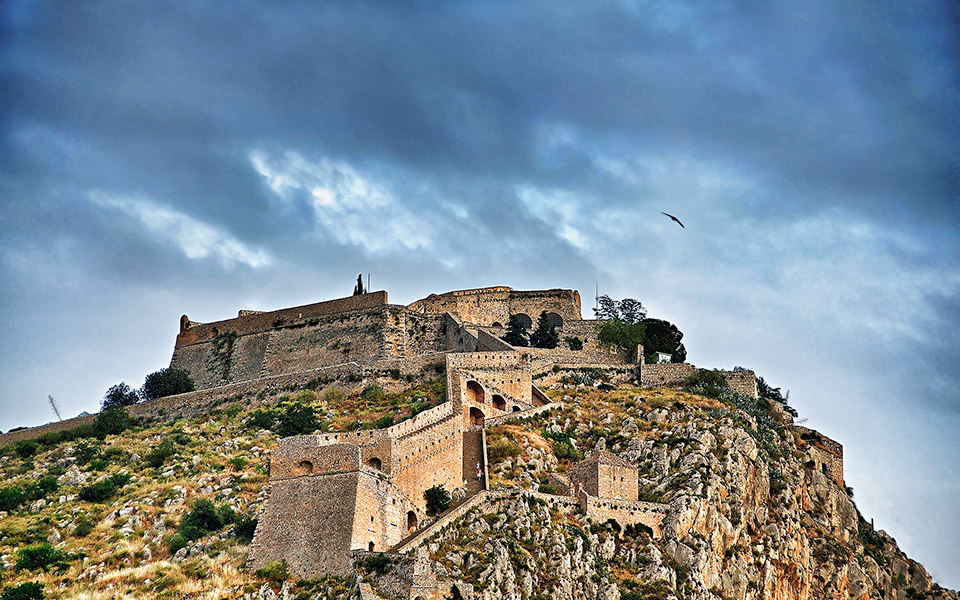
The imposing Palamidi fortress. Named after the legendary hero Palamedes, it was built in a very short period of time by the Venetians (1711-14).
You can see where Ioannis Kapodistrias, first head of state of newly independent Greece, was assassinated in 1831 (a bullet hole in the wall of Aghios Spyridon church marks the spot). Nearby is the country’s first pharmacy, whose owner embalmed Kapodistrias’ body to lie in state. In Kolokotronis Park is the magnificent equestrian statue, cast in Paris, of Theodoros Kolokotronis, one of the most revered commanders in the Greek War of Independence. Splendid Syntagma Square, there since medieval times under other names, sports an array of great buildings: a mosque from the first Ottoman period, now a theater, a mosque from the second period that became the parliament building, the Venetian naval arsenal, now a museum (see below) and a whimsical, interwar, Mycenaean pastiche which is the National Bank. Elsewhere is the stately Orthodox Cathedral, aglow inside with visual decoration, and the Catholic Cathedral, formerly a mosque, serving since King Otto’s time as a memorial to foreign fighters in the War of Independence.
And then out of town, but still close at hand, you have the inestimable riches of the great archaeological sites of the north Peloponnese. Tiryns is right on the doorstep, Mycenae and Nemea are just up the road to the north, while a few miles east is the great theater of Epidaurus. And so Nafplio is a town for all seasons. Unlike the islands, it does not batten down the hatches in winter and send its workers away. Many here serve a tourist industry that never closes; others go about their business as shopkeepers, civil servants, artists, teachers and so on. For Nafplio is a comparatively prosperous city with multiple sources of income and employment opportunities. It gets a little quieter in the winter but it never sleeps.
Many days in the week I use some feeble excuse to wander round the town. I love its narrow alleyways, the more commercial streets with their colorful shops, the cascades of bougainvillea, the stately palm trees and pines. And it was wandering like this, often with visitors in tow, which led to my book Wandering in Nafplion, 2014. The town has an outrageous talent not just for being lived in but for being enjoyed and, yes, loved. The subtitle of my book is A Lover’s Guide.
Discover the best of Mount Olympus...
A decades-old ritual, Sikinos’ ferry dives...
Whether by foot, car, or the...
In Leonidio, Easter comes alive with...